Gallery
Image Type
Morphological Structure
Clades
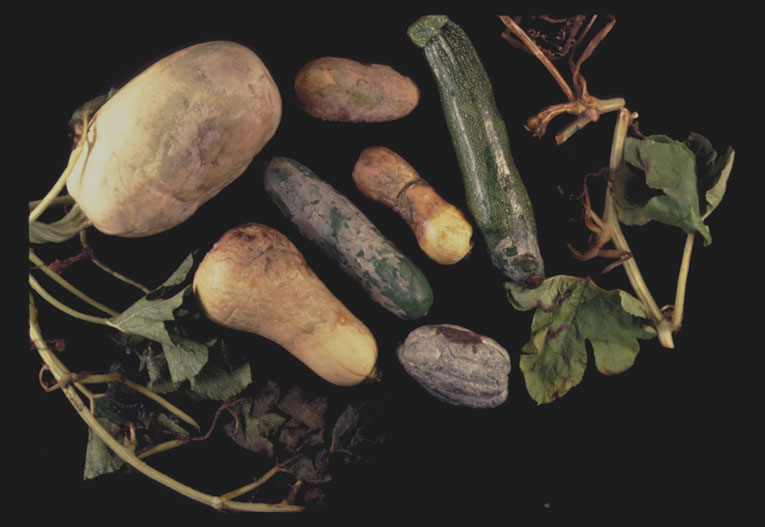 Phytophthora blight of cucurbits caused by Phytophthora capsici ; photo by Gloria Abad at the former Plant Pathogen Identification Laboratory - North Carolina State University (present institution: USDA-APHIS-PPQ)
Phytophthora blight of cucurbits caused by Phytophthora capsici ; photo by Gloria Abad at the former Plant Pathogen Identification Laboratory - North Carolina State University (present institution: USDA-APHIS-PPQ)
Phytophthora blight of cucurbits caused by Phytophthora capsici; photo by Gloria Abad at the former Plant Pathogen Identification Laboratory - North Carolina State University (present institution: USDA-APHIS-PPQ)
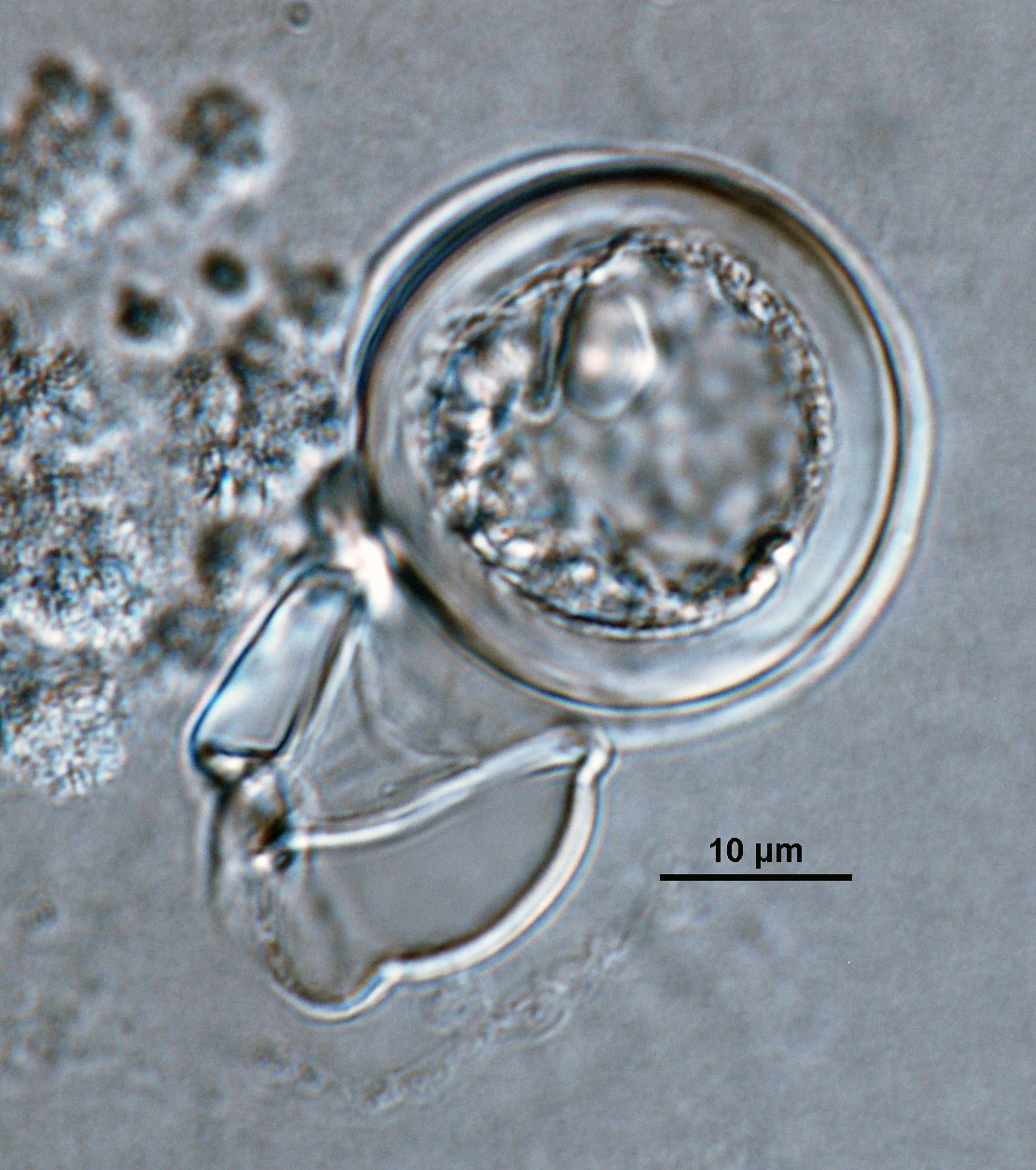 Phytophthora capsici nbsp;(ex-type CPHST BL 33) heterothallic sexual phase: smooth-walled oogonium with amphigynous antheridium and plerotic oospore; photo by Gloria Abad, USDA-APHIS-PPQ.
Phytophthora capsici nbsp;(ex-type CPHST BL 33) heterothallic sexual phase: smooth-walled oogonium with amphigynous antheridium and plerotic oospore; photo by Gloria Abad, USDA-APHIS-PPQ.
Phytophthora capsici (ex-type CPHST BL 33) heterothallic sexual phase: smooth-walled oogonium with amphigynous antheridium and plerotic oospore; photo by Gloria Abad, USDA-APHIS-PPQ.
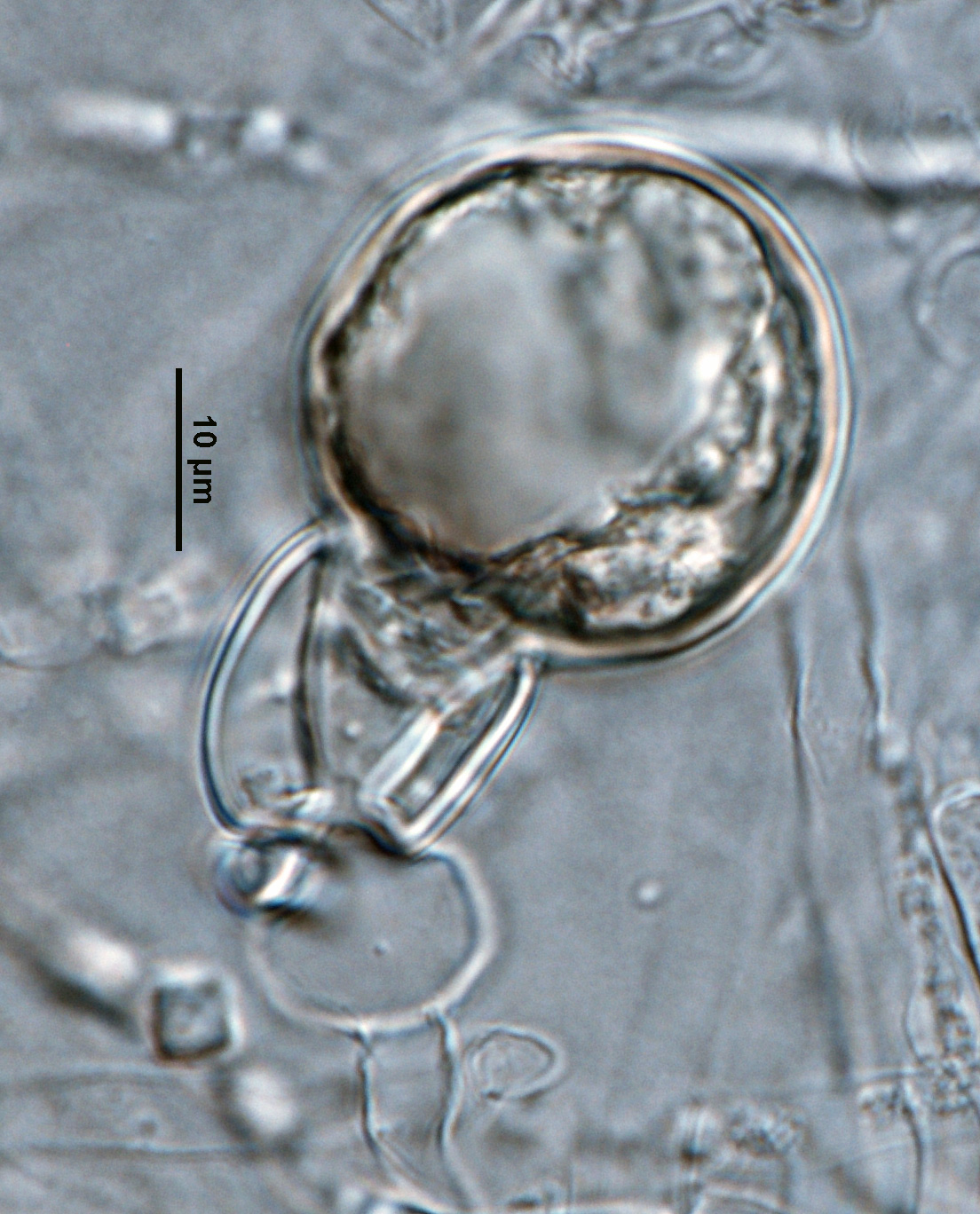 Phytophthora capsici nbsp;(ex-type CPHST BL 33) heterothallic sexual phase: young oogonium with amphigynous antheridium; photo by Gloria Abad, USDA-APHIS-PPQ.
Phytophthora capsici nbsp;(ex-type CPHST BL 33) heterothallic sexual phase: young oogonium with amphigynous antheridium; photo by Gloria Abad, USDA-APHIS-PPQ.
Phytophthora capsici (ex-type CPHST BL 33) heterothallic sexual phase: young oogonium with amphigynous antheridium; photo by Gloria Abad, USDA-APHIS-PPQ.
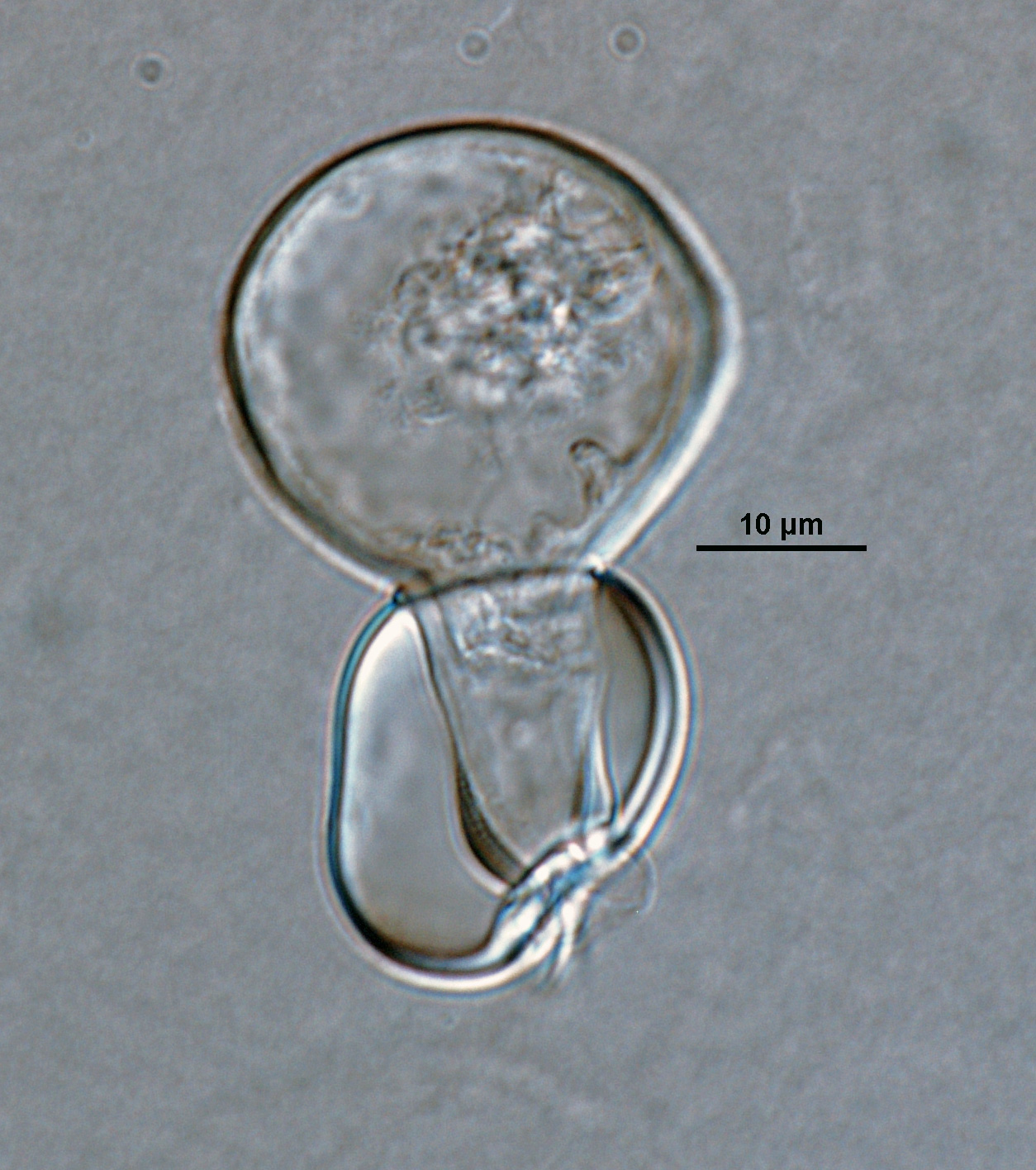 Phytophthora capsici nbsp;(ex-type CPHST BL 33) heterothallic sexual phase: young oogonium with amphigynous antheridium and undifferentiated oospore; photo by Gloria Abad, USDA-APHIS-PPQ.
nbsp;
Phytophthora capsici nbsp;(ex-type CPHST BL 33) heterothallic sexual phase: young oogonium with amphigynous antheridium and undifferentiated oospore; photo by Gloria Abad, USDA-APHIS-PPQ.
nbsp;
Phytophthora capsici (ex-type CPHST BL 33) heterothallic sexual phase: young oogonium with amphigynous antheridium and undifferentiated oospore; photo by Gloria Abad, USDA-APHIS-PPQ.
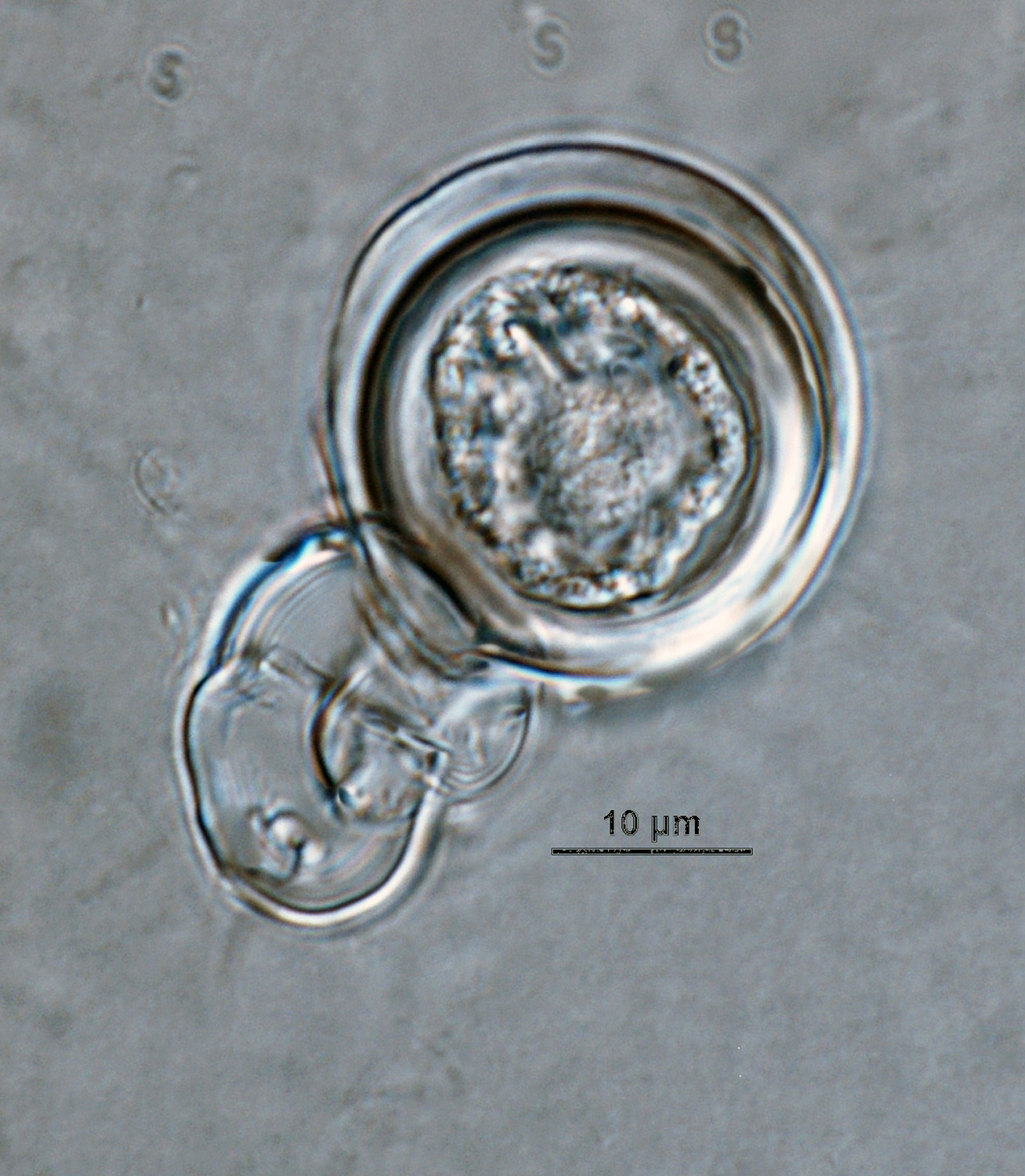 Phytophthora capsici nbsp;(ex-type CPHST BL 33) heterothallic sexual phase: smooth-walled oogonium with amphigynous antheridium and aplerotic oospore; photo by Gloria Abad, USDA-APHIS-PPQ.
Phytophthora capsici nbsp;(ex-type CPHST BL 33) heterothallic sexual phase: smooth-walled oogonium with amphigynous antheridium and aplerotic oospore; photo by Gloria Abad, USDA-APHIS-PPQ.
Phytophthora capsici (ex-type CPHST BL 33) heterothallic sexual phase: smooth-walled oogonium with amphigynous antheridium and aplerotic oospore; photo by Gloria Abad, USDA-APHIS-PPQ.
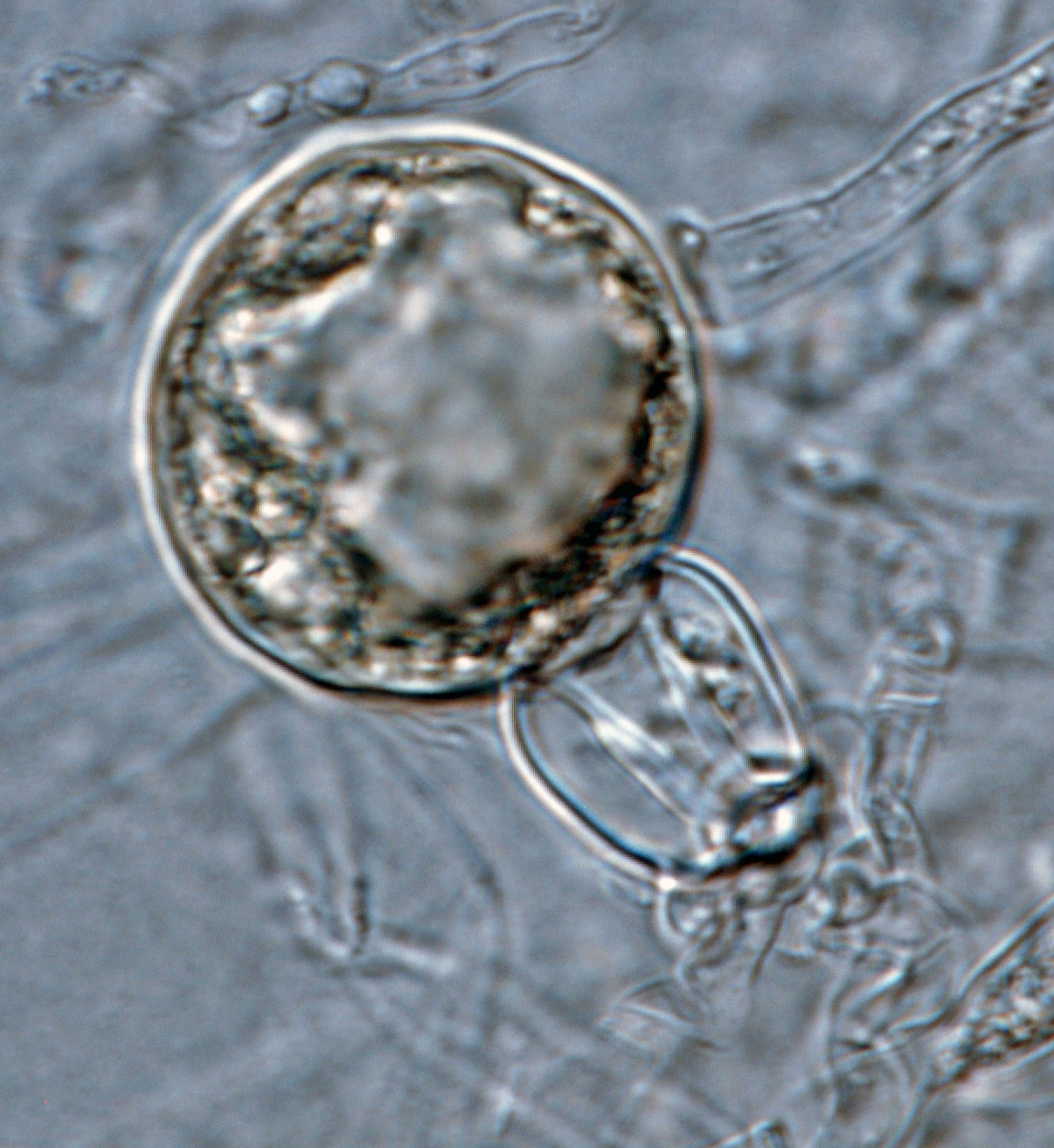 Phytophthora capsici nbsp;(ex-type CPHST BL 33) heterothallic sexual phase: young oogoniumnbsp;with amphigynous antheridium; photo by Gloria Abad, USDA-APHIS-PPQ.
Phytophthora capsici nbsp;(ex-type CPHST BL 33) heterothallic sexual phase: young oogoniumnbsp;with amphigynous antheridium; photo by Gloria Abad, USDA-APHIS-PPQ.
Phytophthora capsici (ex-type CPHST BL 33) heterothallic sexual phase: young oogonium with amphigynous antheridium; photo by Gloria Abad, USDA-APHIS-PPQ.
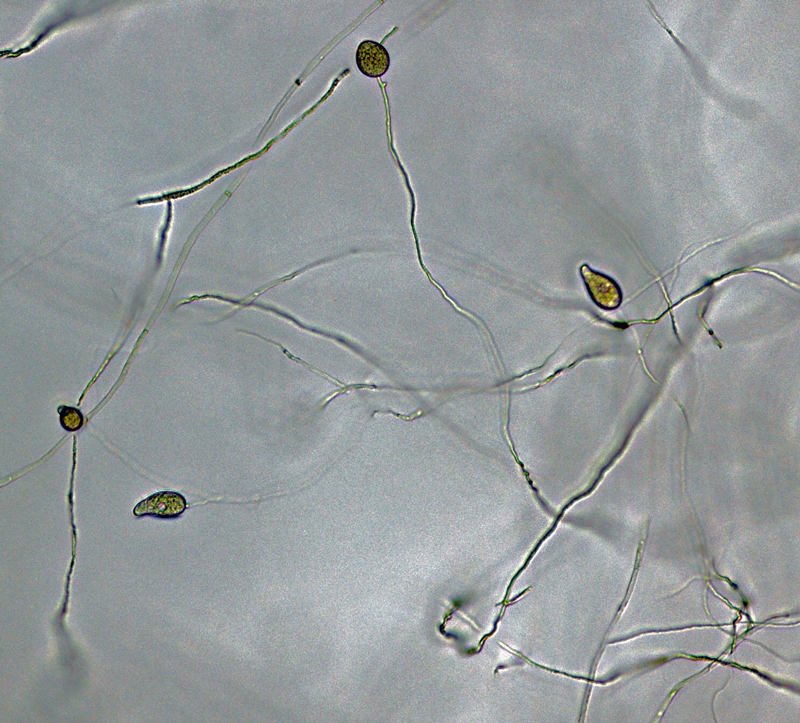 P. capsici nbsp;(ex-type CPHST BL 33) asexual phase:nbsp;sporangia formed in unbranched and irregular branched sporangiophores; photo by Gloria Abad, USDA-APHIS-PPQ.
P. capsici nbsp;(ex-type CPHST BL 33) asexual phase:nbsp;sporangia formed in unbranched and irregular branched sporangiophores; photo by Gloria Abad, USDA-APHIS-PPQ.
P. capsici (ex-type CPHST BL 33) asexual phase: sporangia formed in unbranched and irregular branched sporangiophores; photo by Gloria Abad, USDA-APHIS-PPQ.
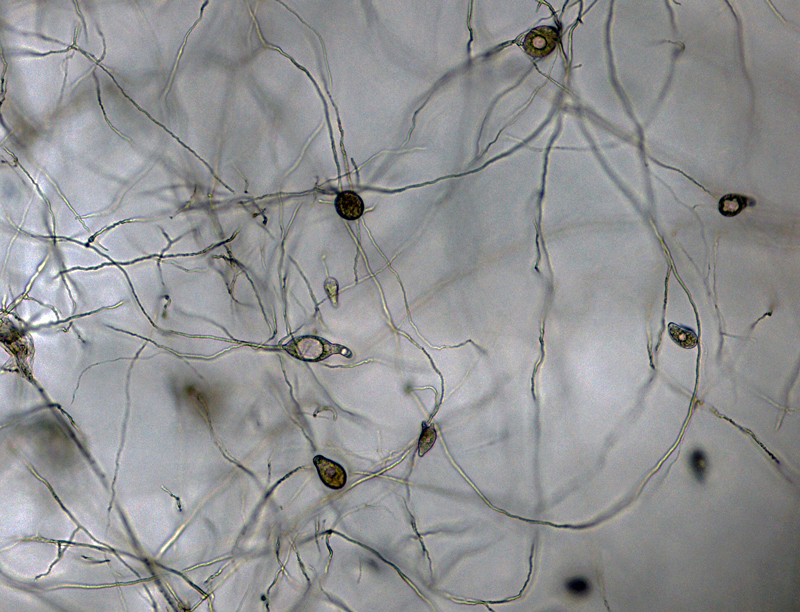 P. capsici nbsp;(ex-type CPHST BL 33) asexual phase:nbsp;sporangia formed in unbranched and irregular branched sporangiophores; photo by Gloria Abad, USDA-APHIS-PPQ.
P. capsici nbsp;(ex-type CPHST BL 33) asexual phase:nbsp;sporangia formed in unbranched and irregular branched sporangiophores; photo by Gloria Abad, USDA-APHIS-PPQ.
P. capsici (ex-type CPHST BL 33) asexual phase: sporangia formed in unbranched and irregular branched sporangiophores; photo by Gloria Abad, USDA-APHIS-PPQ.
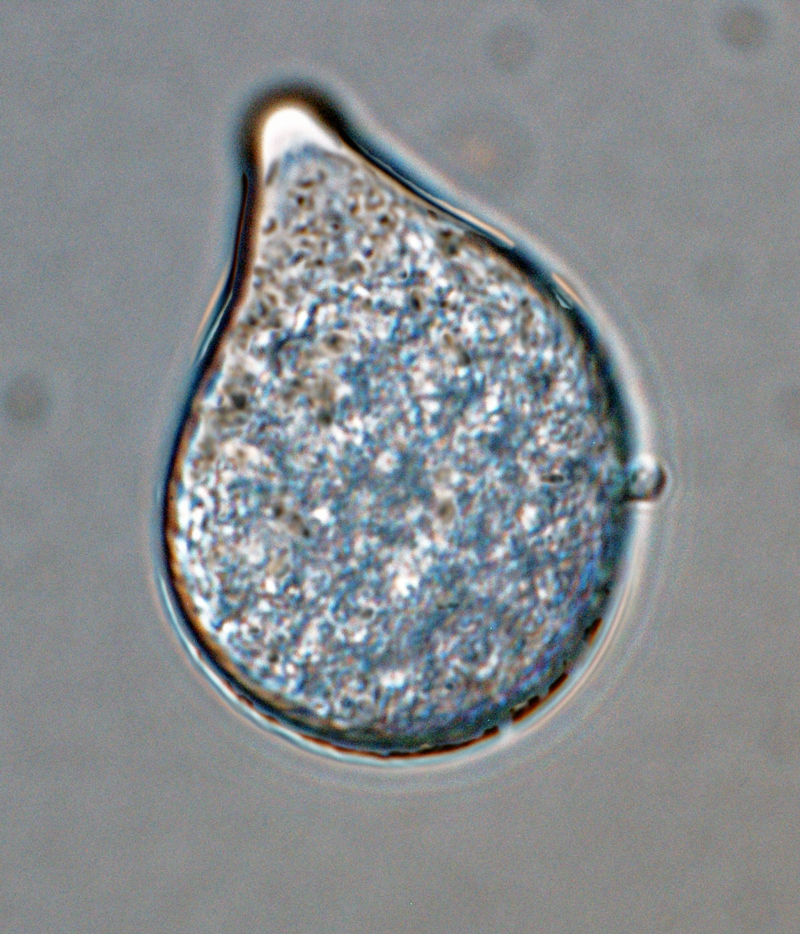 P. capsici nbsp;(ex-type CPHST BL 33) asexual phase: papillate subglobose sporangium with short pedicel; photo by Gloria Abad, USDA-APHIS-PPQ.
P. capsici nbsp;(ex-type CPHST BL 33) asexual phase: papillate subglobose sporangium with short pedicel; photo by Gloria Abad, USDA-APHIS-PPQ.
P. capsici (ex-type CPHST BL 33) asexual phase: papillate subglobose sporangium with short pedicel; photo by Gloria Abad, USDA-APHIS-PPQ.
 P. capsici nbsp;(ex-type CPHST BL 33) asexual phase: semipapillate pyriform sporangium with medium pedicel; photo by Gloria Abad, USDA-APHIS-PPQ.
P. capsici nbsp;(ex-type CPHST BL 33) asexual phase: semipapillate pyriform sporangium with medium pedicel; photo by Gloria Abad, USDA-APHIS-PPQ.
P. capsici (ex-type CPHST BL 33) asexual phase: semipapillate pyriform sporangium with medium pedicel; photo by Gloria Abad, USDA-APHIS-PPQ.
 P. capsici nbsp;(ex-type CPHST BL 33) asexual phase: semipapillate distorted shape sporangium with medium pedicel; photo by Gloria Abad, USDA-APHIS-PPQ.
P. capsici nbsp;(ex-type CPHST BL 33) asexual phase: semipapillate distorted shape sporangium with medium pedicel; photo by Gloria Abad, USDA-APHIS-PPQ.
P. capsici (ex-type CPHST BL 33) asexual phase: semipapillate distorted shape sporangium with medium pedicel; photo by Gloria Abad, USDA-APHIS-PPQ.
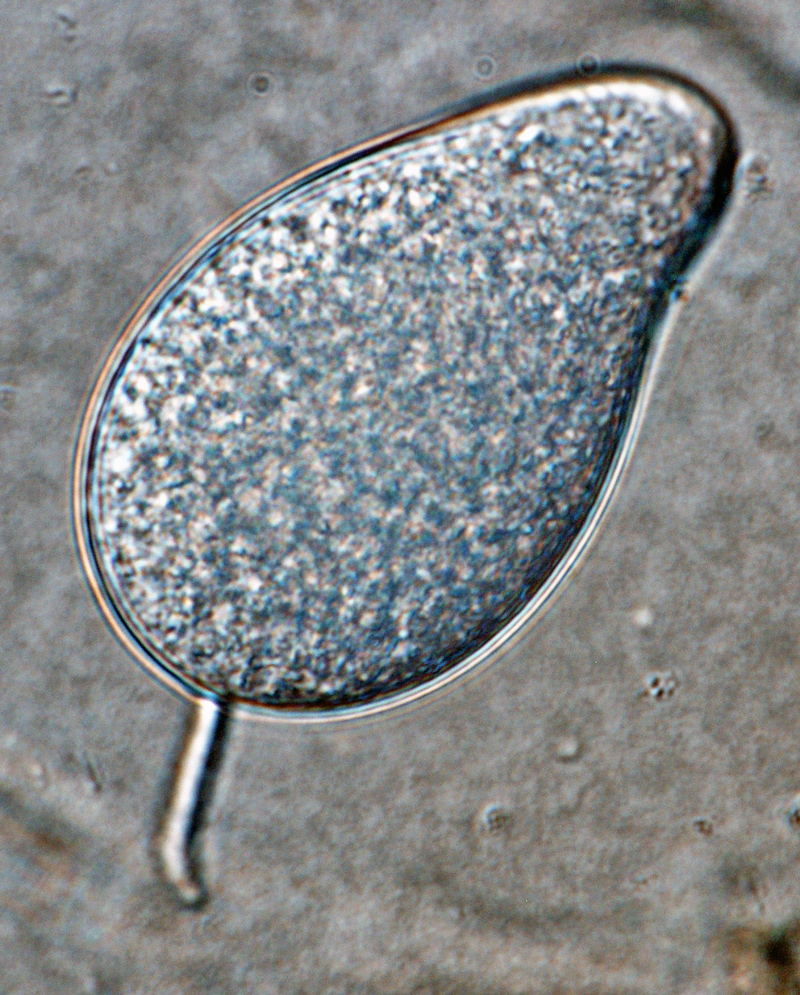 P. capsici nbsp;(ex-type CPHST BL 33) asexual phase: semipapillate pyriform sporangium with medium pedicel; photo by Gloria Abad, USDA-APHIS-PPQ.
P. capsici nbsp;(ex-type CPHST BL 33) asexual phase: semipapillate pyriform sporangium with medium pedicel; photo by Gloria Abad, USDA-APHIS-PPQ.
P. capsici (ex-type CPHST BL 33) asexual phase: semipapillate pyriform sporangium with medium pedicel; photo by Gloria Abad, USDA-APHIS-PPQ.
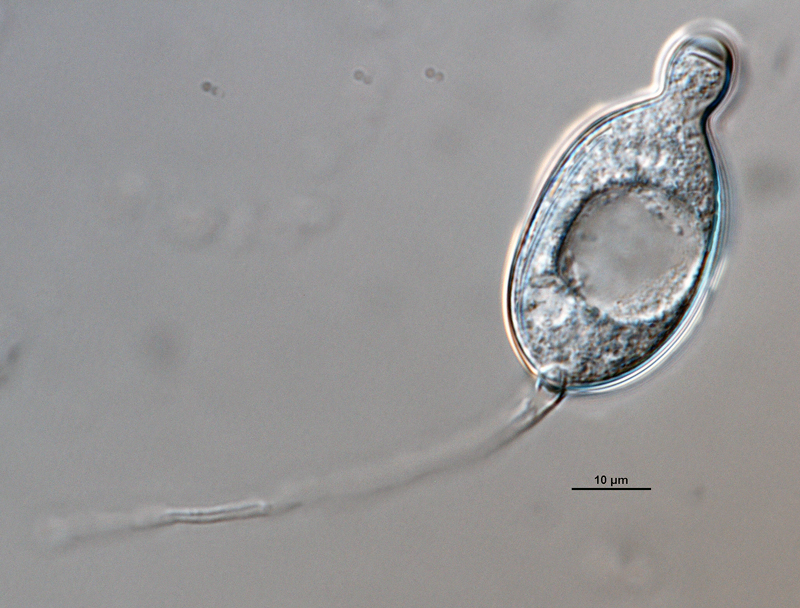 P. capsici nbsp;(ex-type CPHST BL 33) asexual phase: semipapillate distorted shape sporangium with long pedicel; photo by Gloria Abad, USDA-APHIS-PPQ.
P. capsici nbsp;(ex-type CPHST BL 33) asexual phase: semipapillate distorted shape sporangium with long pedicel; photo by Gloria Abad, USDA-APHIS-PPQ.
P. capsici (ex-type CPHST BL 33) asexual phase: semipapillate distorted shape sporangium with long pedicel; photo by Gloria Abad, USDA-APHIS-PPQ.
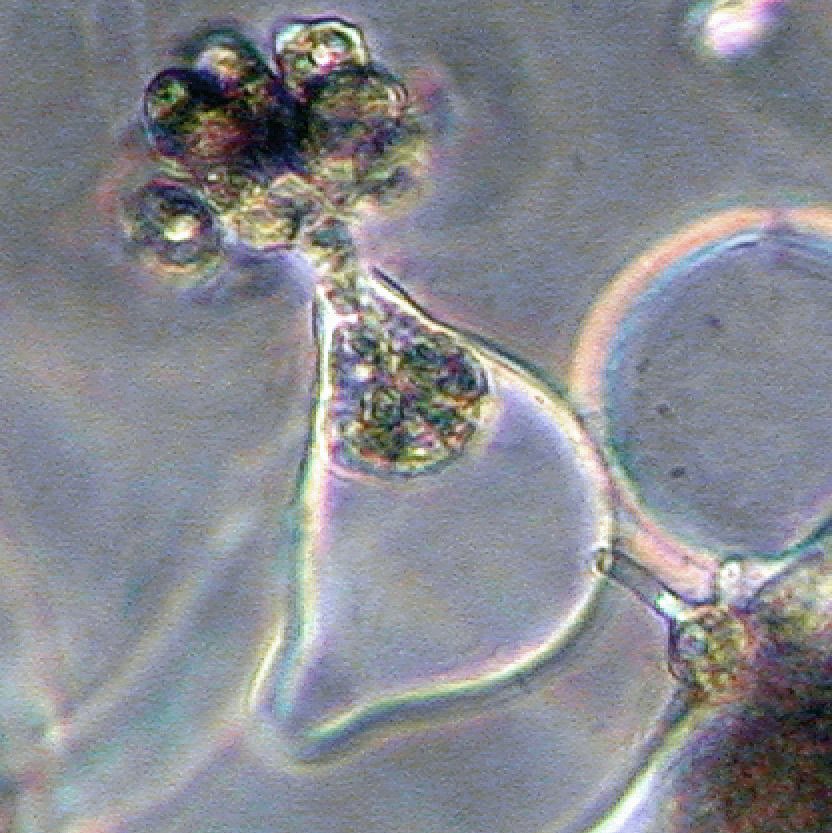 Phytophthora capsici nbsp;(selected specimen P223) asexual phase: zoospores produced from bipapillate sporangium; photo by Gloria Abad, USDA-APHIS-PPQ.
Phytophthora capsici nbsp;(selected specimen P223) asexual phase: zoospores produced from bipapillate sporangium; photo by Gloria Abad, USDA-APHIS-PPQ.
Phytophthora capsici (selected specimen P223) asexual phase: zoospores produced from bipapillate sporangium; photo by Gloria Abad, USDA-APHIS-PPQ.
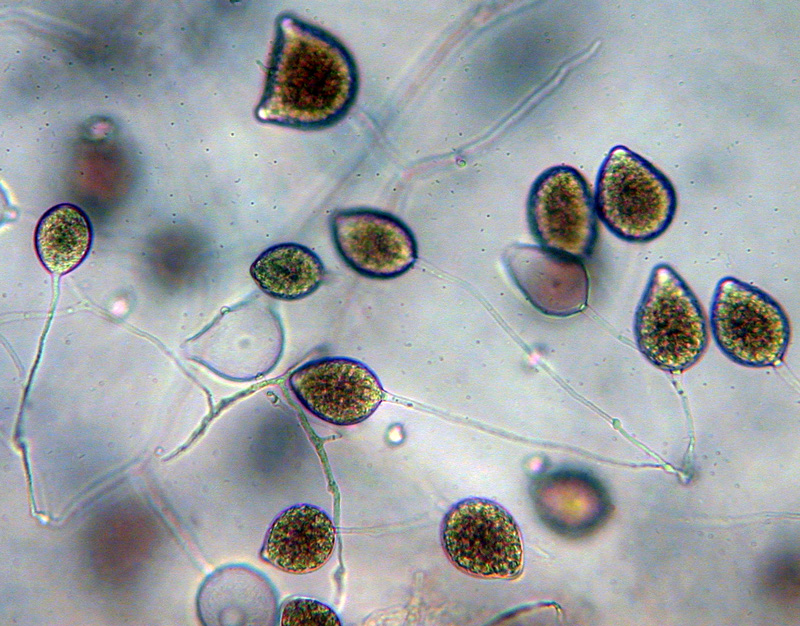 Phytophthora capsici nbsp;(selected specimen P223) asexual phase:nbsp;sporangia originated in unbranched and irregular branched sporangiophores; photonbsp;by Gloria Abad, USDA-APHIS-PPQ.
Phytophthora capsici nbsp;(selected specimen P223) asexual phase:nbsp;sporangia originated in unbranched and irregular branched sporangiophores; photonbsp;by Gloria Abad, USDA-APHIS-PPQ.
Phytophthora capsici (selected specimen P223) asexual phase: sporangia originated in unbranched and irregular branched sporangiophores; photo by Gloria Abad, USDA-APHIS-PPQ.
 Phytophthora capsici nbsp;(selected specimen P223) asexual phase: zoospores produced from semipapillated or bipapillate sporangia; photo by Gloria Abad, USDA-APHIS-PPQ.
Phytophthora capsici nbsp;(selected specimen P223) asexual phase: zoospores produced from semipapillated or bipapillate sporangia; photo by Gloria Abad, USDA-APHIS-PPQ.
Phytophthora capsici (selected specimen P223) asexual phase: zoospores produced from semipapillated or bipapillate sporangia; photo by Gloria Abad, USDA-APHIS-PPQ.
Phytophthora capsici (selected specimen P223) asexual phase: zoospores produced from semipapillated or bipapillate sporangia; photo by Gloria Abad, USDA-APHIS-PPQ.
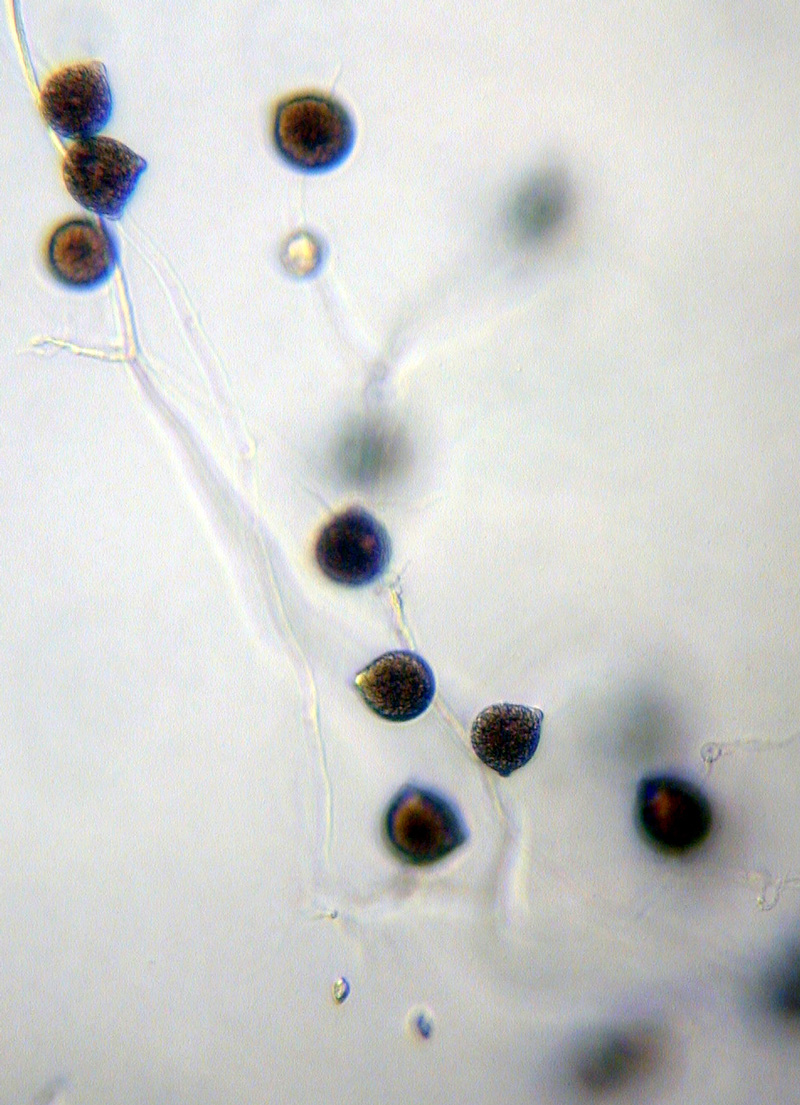 Phytophthora capsici nbsp;(selected specimen P223) asexual phase: sporangia originated in unbranched and simple sympodial sporangiophores; photo by Gloria Abad, USDA-APHIS-PPQ.
Phytophthora capsici nbsp;(selected specimen P223) asexual phase: sporangia originated in unbranched and simple sympodial sporangiophores; photo by Gloria Abad, USDA-APHIS-PPQ.
Phytophthora capsici (selected specimen P223) asexual phase: sporangia originated in unbranched and simple sympodial sporangiophores; photo by Gloria Abad, USDA-APHIS-PPQ.
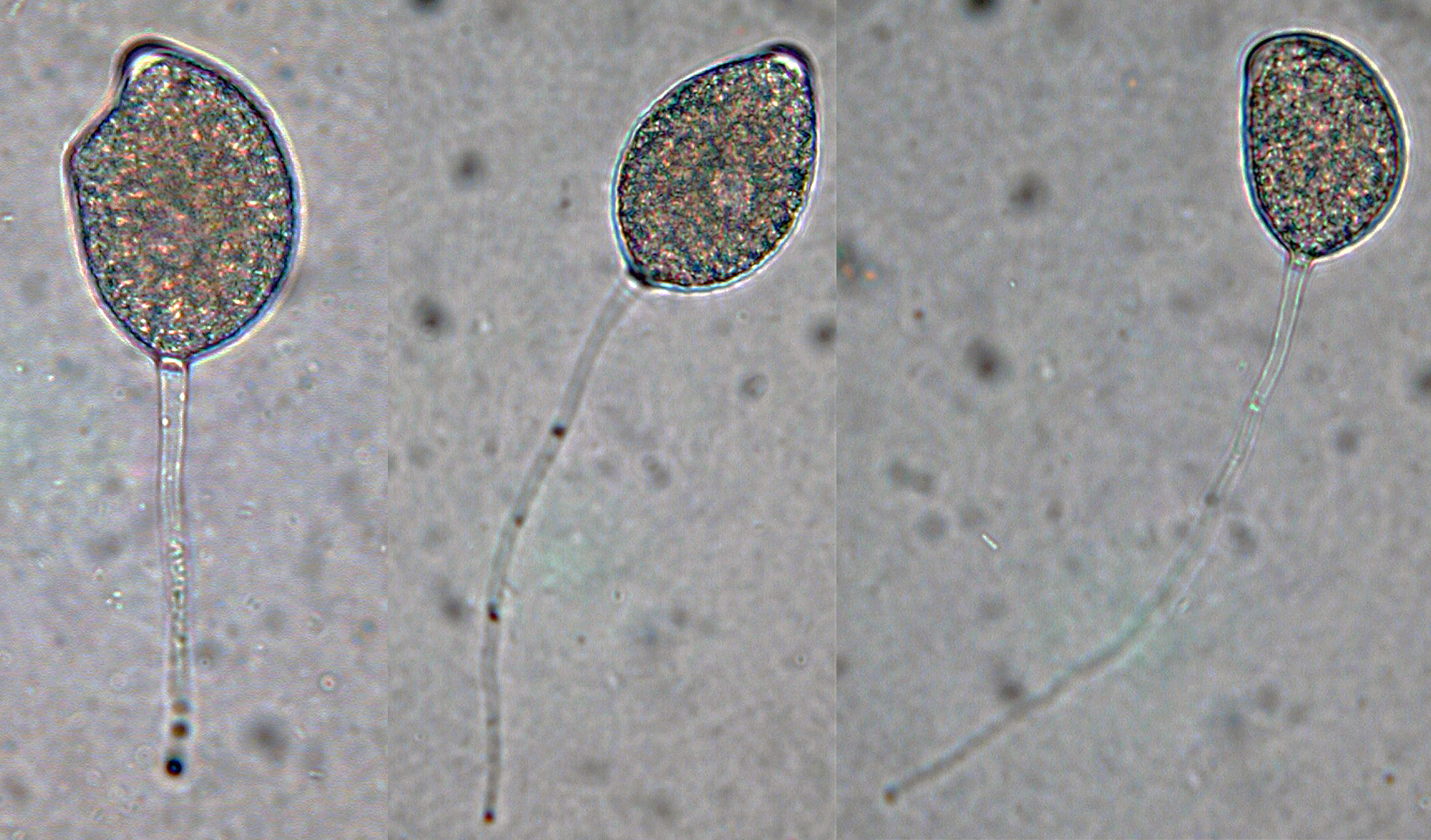 Phytophthora capsici nbsp;(selected specimen P223) asexual phase: semipapillate variably shaped caducous sporangia with long pedicels;nbsp;photo by Gloria Abad, USDA-APHIS-PPQ.
Phytophthora capsici nbsp;(selected specimen P223) asexual phase: semipapillate variably shaped caducous sporangia with long pedicels;nbsp;photo by Gloria Abad, USDA-APHIS-PPQ.
Phytophthora capsici (selected specimen P223) asexual phase: semipapillate variably shaped caducous sporangia with long pedicels; photo by Gloria Abad, USDA-APHIS-PPQ.
Phytophthora spp. in subclade 9d: portion of the seven-loci ML phylogeny featuring the type cultures of 212 described species (by T. Bourret). Notice the position of P. captiosa Ex-type CBS 119107 = S&T BL 11. Gloria Abad, USDA S&T.
Phytophthora spp. in subclade 9d: Morphological Tabular key (PDF) and Tabular key legends (PDF) in IDphy2 KEY SECTION. Notice the data of P. captiosa Ex-type CBS 119107 = S&T BL 11. Gloria Abad, USDA S&T.
Phytophthora spp. in subclade 2c: portion of the seven-loci ML phylogeny featuring the type cultures of 212 described species (by T. Bourret). Notice the position of P. caryae Ex-type NJB2013-AF-08. Gloria Abad, USDA S&T.
Phytophthora spp. in subclade 2c: Morphological Tabular key (PDF) and Tabular key legends (PDF) in IDphy2 KEY SECTION. Notice the data of P. caryae Ex-type NJB2013-AF-08. Gloria Abad, USDA S&T.
Phytophthora spp. in Clade 5: portion of the seven-loci ML phylogeny featuring the type cultures of 212 described species (by T. Bourret). Notice the position of P. castaneae Ex-type CBS 149821 = S&T BL 47G. Gloria Abad, USDA S&T.
Phytophthora spp. in Clade 5: Morphological Tabular key (PDF) and Tabular key legends (PDF) in IDphy2 KEY SECTION. Notice the data of P. castaneae Ex-type CBS 149821 = S&T BL 47G. Gloria Abad, USDA S&T.
 Phytophthora castaneae (CPHST BL 47G) colony of the ex-type grown for 7 days on (a) V8 agar (b) potato dextrose agar (c) malt extract agar; photos by Krysta Jennings and Leandra Knight, USDA-APHIS-PPQ
Phytophthora castaneae (CPHST BL 47G) colony of the ex-type grown for 7 days on (a) V8 agar (b) potato dextrose agar (c) malt extract agar; photos by Krysta Jennings and Leandra Knight, USDA-APHIS-PPQ
Phytophthora castaneae (CPHST BL 47G) colony of the ex-type grown for 7 days on (a) V8 agar (b) potato dextrose agar (c) malt extract agar; photos by Krysta Jennings and Leandra Knight, USDA-APHIS-PPQ
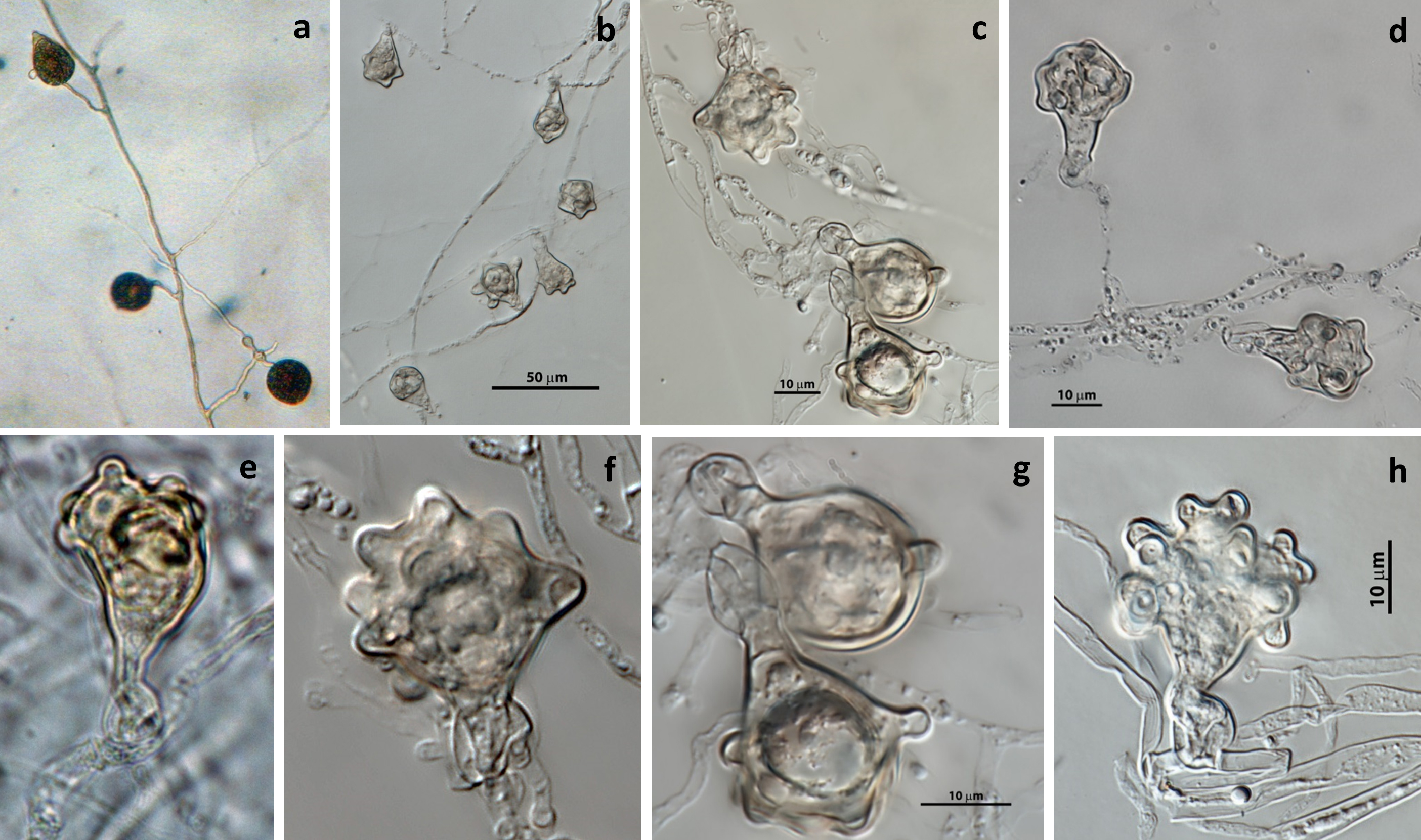 Phytophthora castaneae nbsp;ex-type CPHST BL 47G asexual phasenbsp;(a) and sexual phase (b-h): (b-h)nbsp;oogonia with warty protuberances and distinct funnel-shaped bases and amphigynous antheridia; photos by V. Brewster, USDA-APHIS-PPQ.
Phytophthora castaneae nbsp;ex-type CPHST BL 47G asexual phasenbsp;(a) and sexual phase (b-h): (b-h)nbsp;oogonia with warty protuberances and distinct funnel-shaped bases and amphigynous antheridia; photos by V. Brewster, USDA-APHIS-PPQ.
Phytophthora castaneae ex-type CPHST BL 47G asexual phase (a) and sexual phase (b-h): (b-h) oogonia with warty protuberances and distinct funnel-shaped bases and amphigynous antheridia; photos by V. Brewster, USDA-APHIS-PPQ.
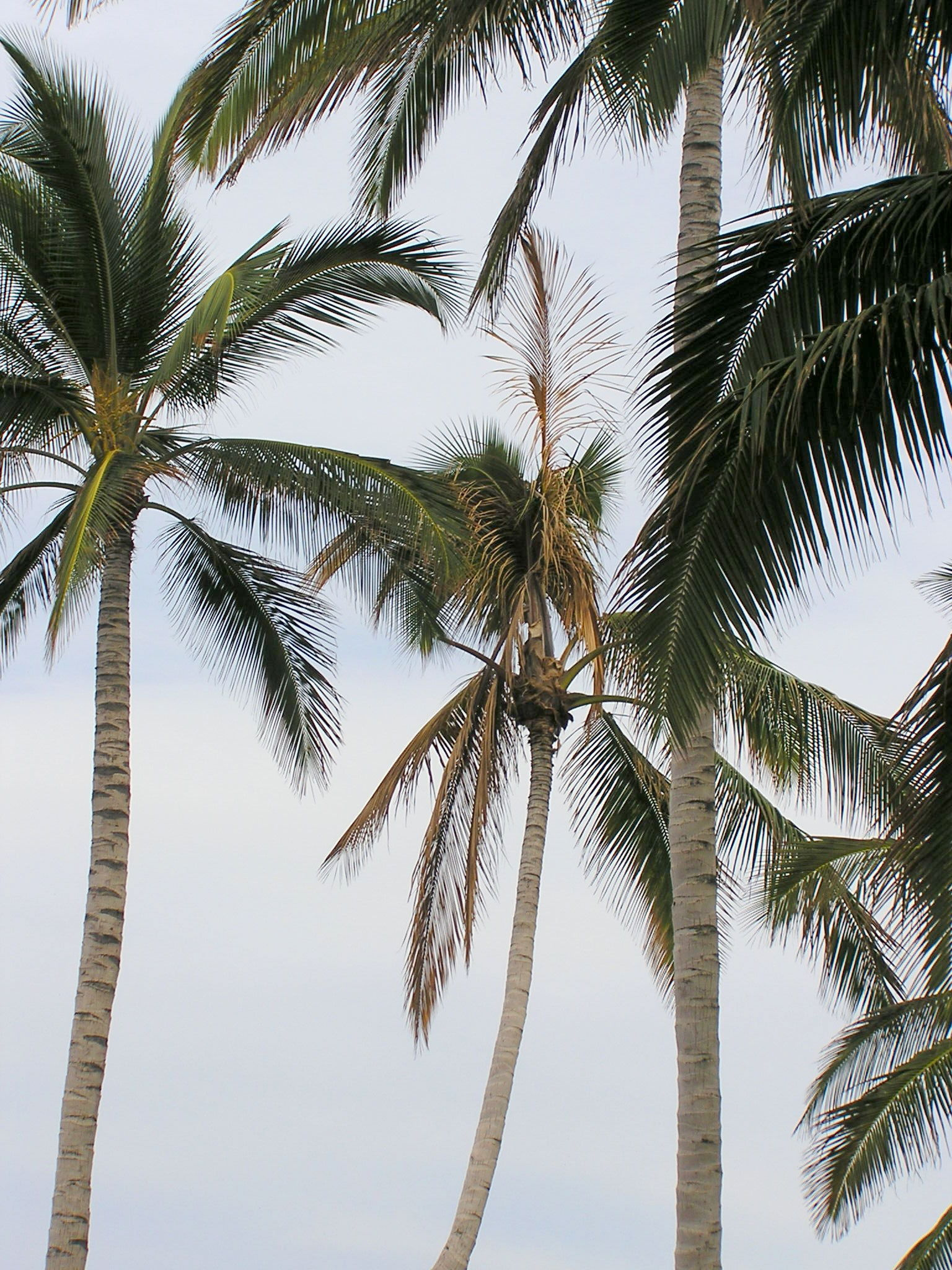 Coconut heart rot, resulting in a necrotic heart leaf, caused by Phytophthora castaneae ; photo by Scot Nelson, University of Hawaii at Manoa
Coconut heart rot, resulting in a necrotic heart leaf, caused by Phytophthora castaneae ; photo by Scot Nelson, University of Hawaii at Manoa
Coconut heart rot, resulting in a necrotic heart leaf, caused by Phytophthora castaneae; photo by Scot Nelson, University of Hawaii at Manoa
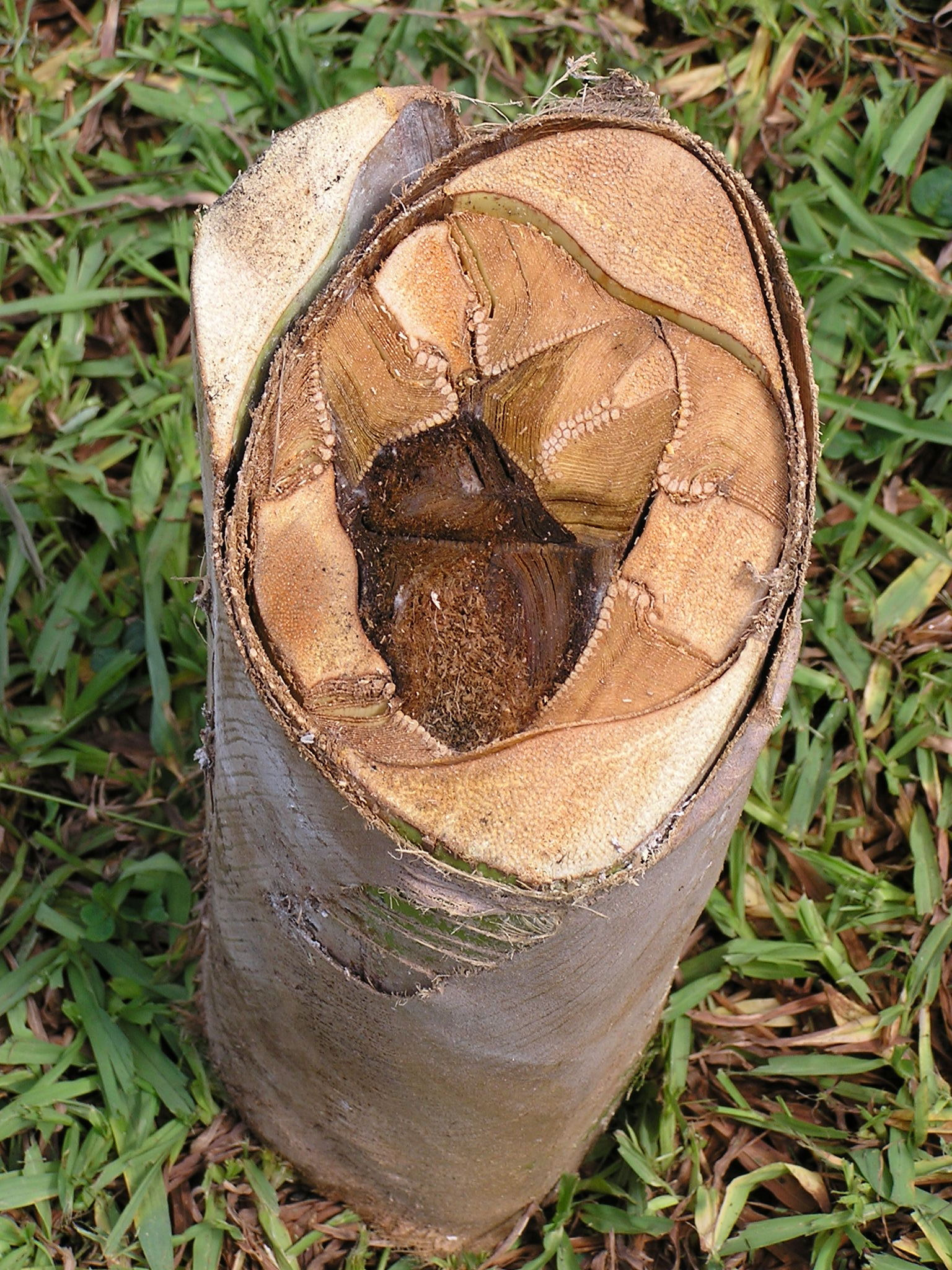 Coconut heart rot, resulting in basal internal stem necrosis, caused by Phytophthora castaneae ; photo by Scot Nelson, University of Hawaii at Manoa
Coconut heart rot, resulting in basal internal stem necrosis, caused by Phytophthora castaneae ; photo by Scot Nelson, University of Hawaii at Manoa
Coconut heart rot, resulting in basal internal stem necrosis, caused by Phytophthora castaneae; photo by Scot Nelson, University of Hawaii at Manoa
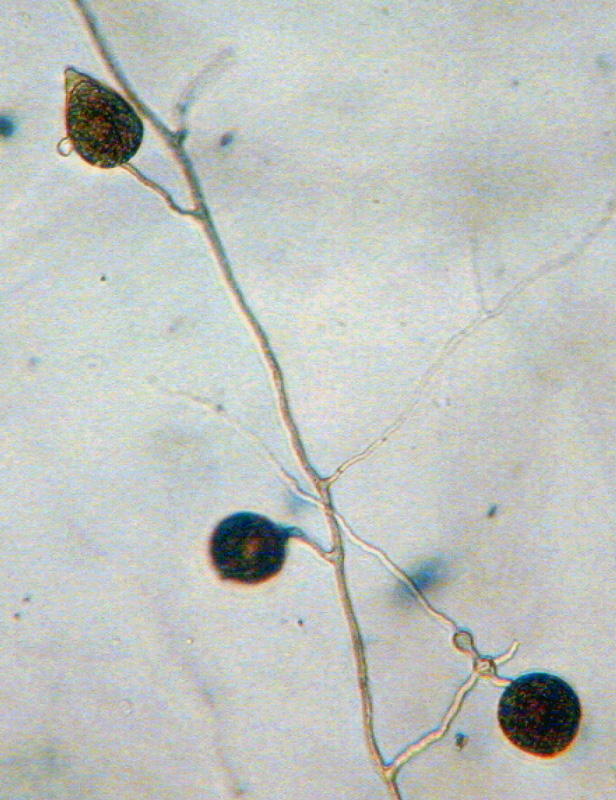 Phytophthora castaneae nbsp;ex-type CPHST BL 47G asexual phase: persistent papillate sporangia and hyphal swellings; photo by V. Brewster, USDA-APHIS-PPQ.
Phytophthora castaneae nbsp;ex-type CPHST BL 47G asexual phase: persistent papillate sporangia and hyphal swellings; photo by V. Brewster, USDA-APHIS-PPQ.
Phytophthora castaneae ex-type CPHST BL 47G asexual phase: persistent papillate sporangia and hyphal swellings; photo by V. Brewster, USDA-APHIS-PPQ.
 Phytophthora castaneae nbsp;ex-type CPHST BL 47G sexual phase: oogonia with warty protuberances and distinct funnel-shaped bases and amphigynous antheridia; photo by V. Brewster, USDA-APHIS-PPQ.
Phytophthora castaneae nbsp;ex-type CPHST BL 47G sexual phase: oogonia with warty protuberances and distinct funnel-shaped bases and amphigynous antheridia; photo by V. Brewster, USDA-APHIS-PPQ.
Phytophthora castaneae ex-type CPHST BL 47G sexual phase: oogonia with warty protuberances and distinct funnel-shaped bases and amphigynous antheridia; photo by V. Brewster, USDA-APHIS-PPQ.
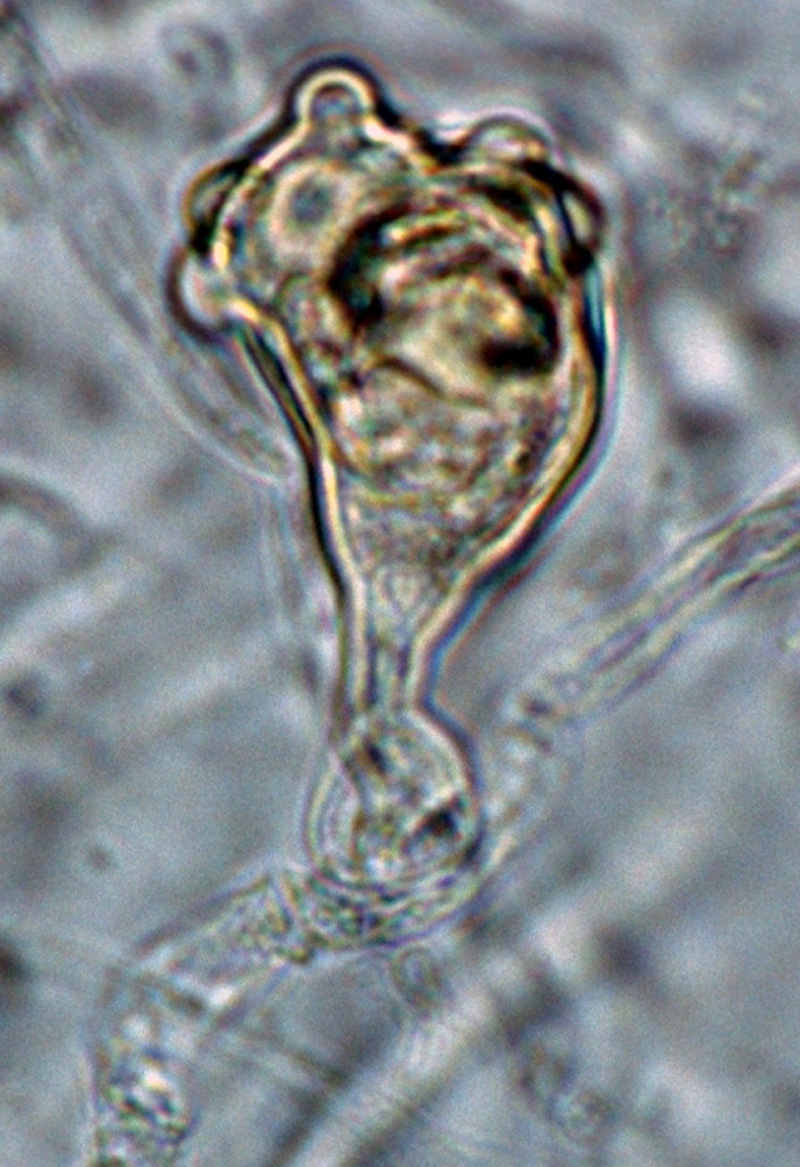 Phytophthora castaneae nbsp;ex-type CPHST BL 47G sexual phase: oogoniumnbsp;with warty protuberances and distinct funnel-shaped basenbsp;and amphigynous antheridium; photo by V. Brewster, USDA-APHIS-PPQ.
Phytophthora castaneae nbsp;ex-type CPHST BL 47G sexual phase: oogoniumnbsp;with warty protuberances and distinct funnel-shaped basenbsp;and amphigynous antheridium; photo by V. Brewster, USDA-APHIS-PPQ.
Phytophthora castaneae ex-type CPHST BL 47G sexual phase: oogonium with warty protuberances and distinct funnel-shaped base and amphigynous antheridium; photo by V. Brewster, USDA-APHIS-PPQ.

